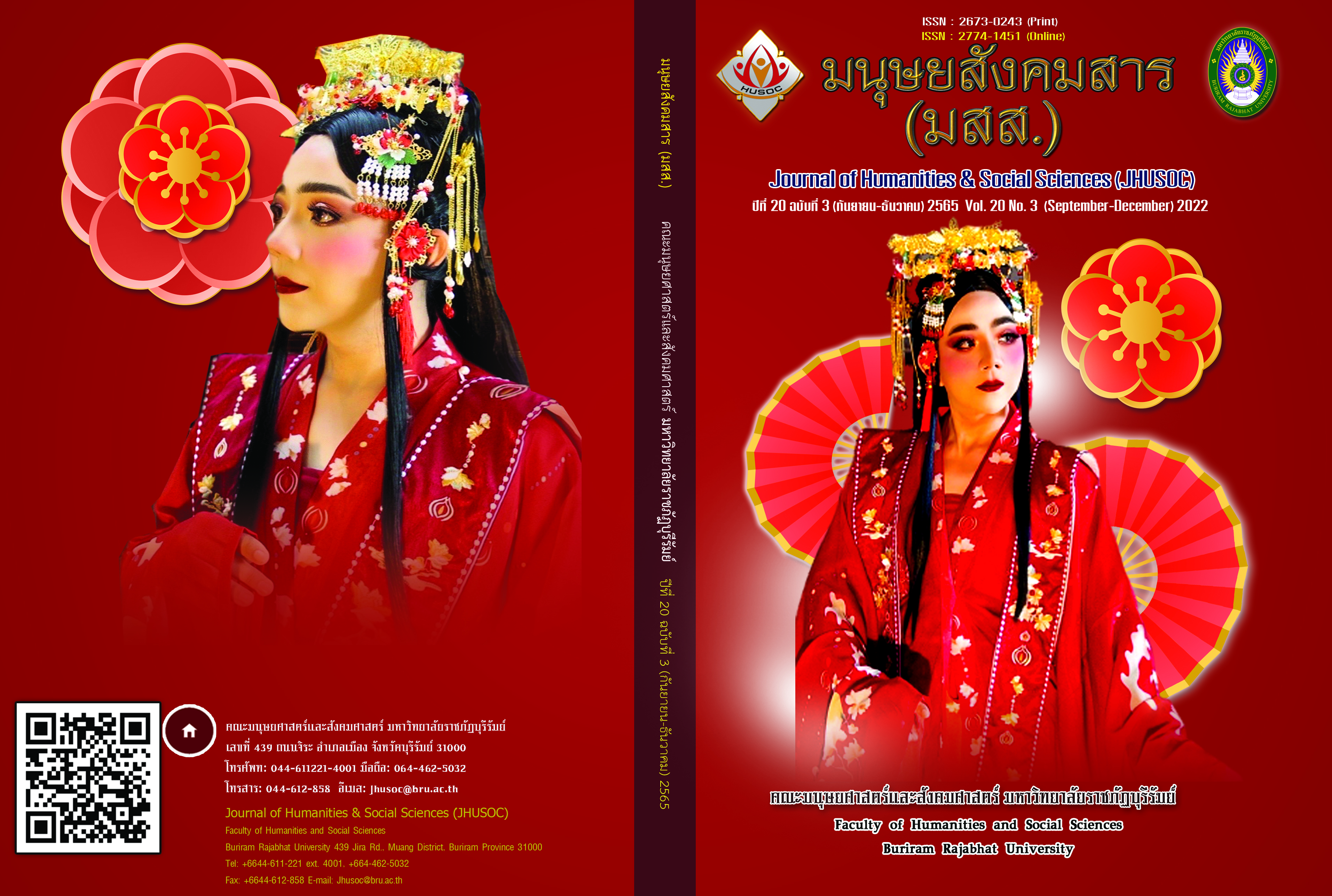Context of Ggeography and Way of Life of Ban Hua Ruea community in Ubon Ratchathani Province
Main Article Content
Abstract
The settled and dispersed communities in the local spatial context have possessed particular community ways of living and adapting to the environment, society and culture, and also have had a historical development towards mobility, distribution, and settlement of Ban Hua Ruea Community located in a strategic area that was not far from the city. The research objectives were to describe the context of geography and way of life of Ban Hua Ruea Community in Ubon Ratchathani Province, and to provide suggestions for understanding the context and community ways of farmers who had grown economic crops and raised economic animals for selling online in the digital age. The target group consisted of 25 farmers and community leaders who were selected via a purposive sampling method. The research tools were composed of in-depth interviews and focus group discussions. Descriptive statistics were employed to analyze the data. The research results were classified into six aspects as follows: 1) general context, 2) geographical context, 3) spatial context and community map, 4) characteristics of using innovation and technology to generate income for the community in the digital age, 5) human resource development guidelines with community social skills, and 6) lifestyle and quality of life of the people residing in the community. Moreover, some suggestions were made that the community lifestyles should be adapted to changes, and it is very essential to utilize appropriate innovation and technology for generating income.
Article Details

This work is licensed under a Creative Commons Attribution-NonCommercial 4.0 International License.
เนื้อหาและข้อมูลในบทความที่ลงตีพิมพ์ในวารสารทดสอบระบบ ThaiJo2 ถือเป็นข้อคิดเห็นและความรับผิดชอบของผู้เขียนบทความโดยตรงซึ่งกองบรรณาธิการวารสาร ไม่จำเป็นต้องเห็นด้วย หรือร่วมรับผิดชอบใดๆ
บทความ ข้อมูล เนื้อหา รูปภาพ ฯลฯ ที่ได้รับการตีพิมพ์ในวารสารทดสอบระบบ ThaiJo2 ถือเป็นลิขสิทธิ์ของวารสารทดสอบระบบ ThaiJo2 หากบุคคลหรือหน่วยงานใดต้องการนำทั้งหมดหรือส่วนหนึ่งส่วนใดไปเผยแพร่ต่อหรือเพื่อกระทำการใดๆ จะต้องได้รับอนุญาตเป็นลายลักอักษรจากวารสารทดสอบระบบ ThaiJo2 ก่อนเท่านั้น
References
Chantavanich, S. (2011). Theory of sociology (4th ed.). Bangkok: Chulalongkorn University. [in Thai]
Damrong Rajanupab Institute. (2012). Knowledge document on applied area-based rural development. According to the royal initiative (Pidding gold behind the Buddha statue, continuing the royal initiative). Bangkok: Office of the Permanent Secretary for Interior.
E.Super, D. (2008). Opportunity in psychology careers (3rded.). New York: McGraw Hill.
Meechat, W. (2005). Public organization administration behavior. Bangkok: Chulalongkorn University. [in Thai]
Mukwatanakul, O. (2016). Thesis on factors influencing the change in income of People in the special economic zone development area, Nong Khai, Mukdahan, Mae Sot. [Master of Economics]. Business Economics, Faculty of Economics. Thammasat University. [in Thai]
Office of the Secretariat of the House of Representatives. (2016). Report of the National Reform Steering Committee on State Administration. National reform-driven council on administrative issues Management of the province that aims to achieve results based on the area (Area-based Approach).Bangkok: Office of Commissioner 2. [in Thai]
Pimchangtong, D., & Sutthisanon, A. (2015). Research articles on human resource development in learning for local business competition to a learning society. Suthiparitat Journal, 29(90). [in Thai]
Tanchai, W. (2014). Decentralization and Democracy in Thailand (1st ed.). Bangkok: King Prajadhipok's Institute. [in Thai]
Wasi, P. (2016). Public policy process. Bangkok: Miyon Pim Leasing. [in Thai]


